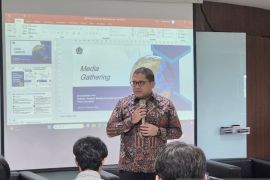"In this regard, our focus is on the central bank's payment system data, which will be part of the national data," BI Governor Perry Warjiyo informed at the 16th Bulletin of Monetary Economics and Banking (BMEB) International Conference and Call for Papers here on Thursday.
Thus, the central bank is now developing data related to payments systems, money markets, and others needed for digital data storage establishment, he added.
With the help of data collection, both digital money and primary money (paper money, coins) could be calculated more quickly, considering that in the future, banks will have two accounts at the central bank, namely a standard account and a digital account, he explained.
In addition, Digital ID will support the development of money multipliers, narrow money (M1), and board money (M2 and M3) in the economic segment.
"Through the national Digital ID, we can actually analyze the differences. We used to use econometric in Excel, now we use big data, data analysis, and data scientists," Warjiyo informed.
Thus, monetary, macroprudential, and payments system policies at the central bank will be more effective, he explained.
However, the development of Digital ID poses cyber risks in terms of monetary stability, financial stability, and operational system, which will need to be paid attention to.
"Operational risks will be new risks that should outweigh the risks of monetary stability and financial system stability," the BI Governor said.
The 16th BMEB is themed “Synergy of Economic Policies and Innovations in Driving Momentum for Sustainable Global Economic Recovery in the Era of Digital Transformation,” highlighting the need for innovation amid the sustained economic stress due to the COVID-29 pandemic.
Related news: ID FOOD launches digital application to distribute cooking oil
Related news: Consistent startup guidance crucial for digital transformation: govt
Translator: Agatha V, Kenzu T
Editor: Rahmad Nasution
Copyright © ANTARA 2022












